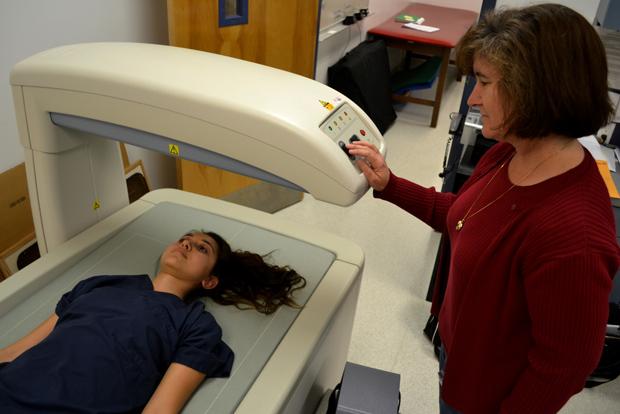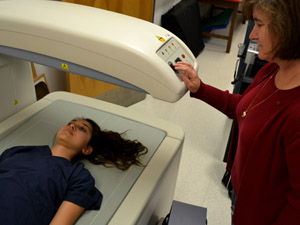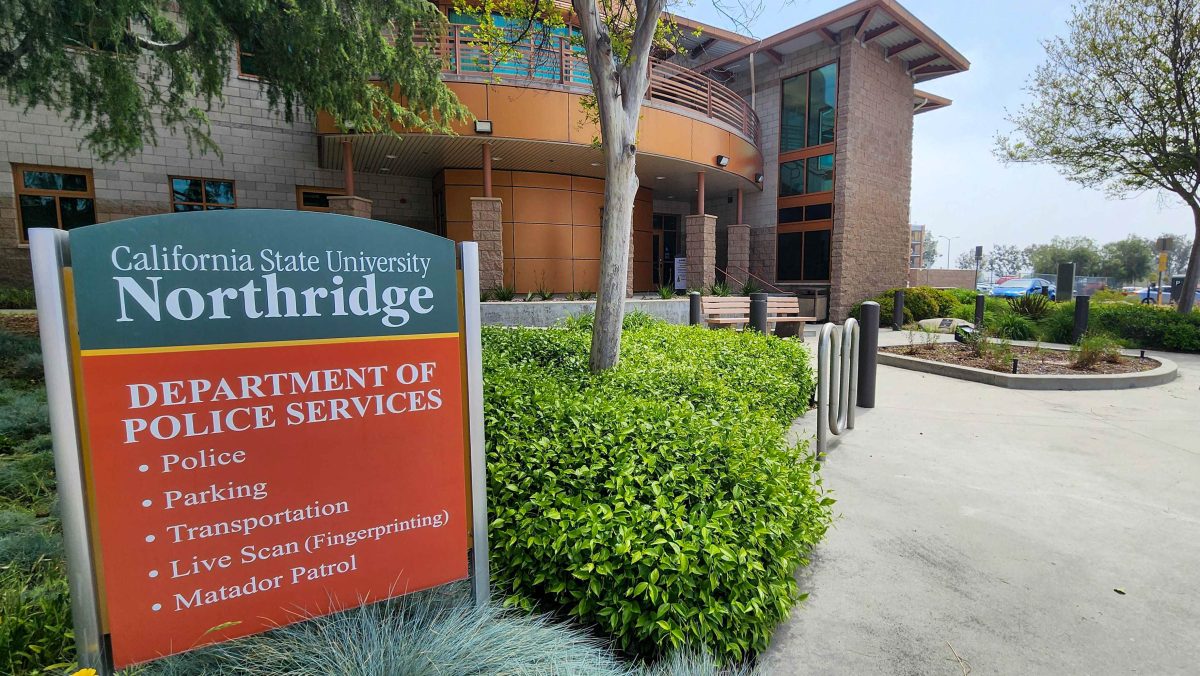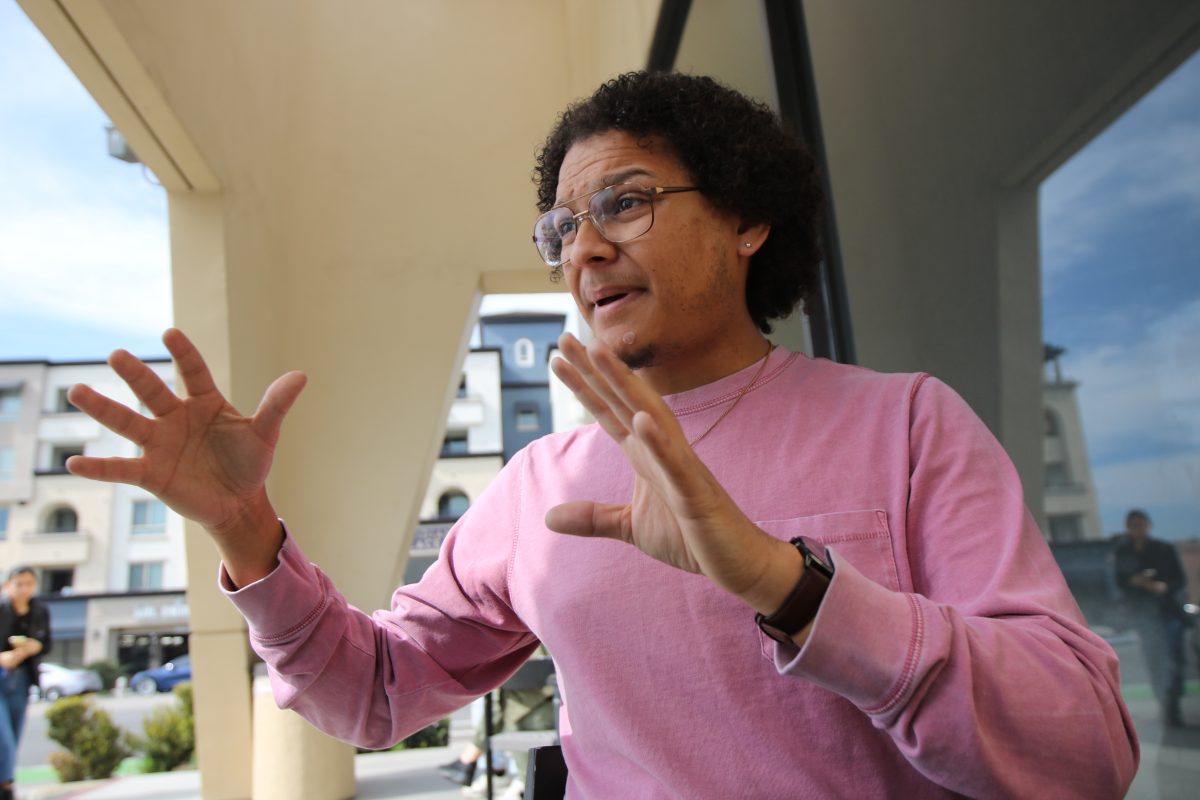
CSUN has two high-tech X-ray scanners that can help students both now and with valuable research in the future.
The Dual-energy X-ray Absorptiometry (or DEXA) scanners are used daily by four licensed researchers on campus. The scanners, located in Redwood Hall and Jacaranda Hall, determine bone mineral content, bone area, bone density and tissue composition of humans and animal specimens.
“(The scanner) is a nice resource to have when health center needs density checks, and we gain a better understanding of how physical activity influences the bone mass of college students,” said Victoria Jaque, a kinesiology professor, graduate coordinator and licensed DEXA operator.
The DEXA machine emits an invisible beam of low-dose X-rays in two energy streams. One stream is absorbed by soft tissue, and the other by bone. The difference between the two gives the measure of bone mineral density, and a highly accurate measure of body composition.
Jaque said student testing is free for individuals who volunteer. In addition, those who have a doctor referral from the Klotz Student Health Center pay a fee of $135 can get a physician to interpret the results.
Melissa Montgomery, kinesiology professor and licensed DEXA operator, said she explains the results, but does not diagnose people because this is only a research lab. The data, however, is valuable.
“The results are given in relation to what are called T-scores and Z-scores that inform individuals on whether their bone mineral density is above or below average,” Montgomery said. “It may indicate to physicians if you need calcium supplements.”
Jaque said the T-score is what a physician would use to diagnose an individual with osteoporosis, and the Z-score gives an individual an idea of how healthy one may be at his or her age.
The tests are painless and involve small doses of radiation. All data is used for ongoing research, including Montgomery’s, which looks at the body composition and landing mechanisms related to knee injuries.
“I scan research with intentions of using the scan to determine how much muscle mass individuals have in their lower body,” she said. “The question I ask is, ‘If you have less muscle mass, does that make you more likely to be injured?’”
Montgomery said her next project is this summer on student athletes, club sport athletes and high level recreation athletes.
Most tests take only 30 to 45 minutes for volunteers, who should inquire by visiting Redwood Hall 170. But Jaque said it takes hours to enter the data. Students from the kinesiology department help her enter the data from the tests.
“The data is the lifetime physical activity history of an individual from childhood to adulthood,” she said.
But for research purposes, rats trump humans. Jacque scans about 48 hind limbs from rats per year.
“Rats are an animal of choice,” Jaque said. “It takes a rat six weeks to have the same results as a human in one year.”






